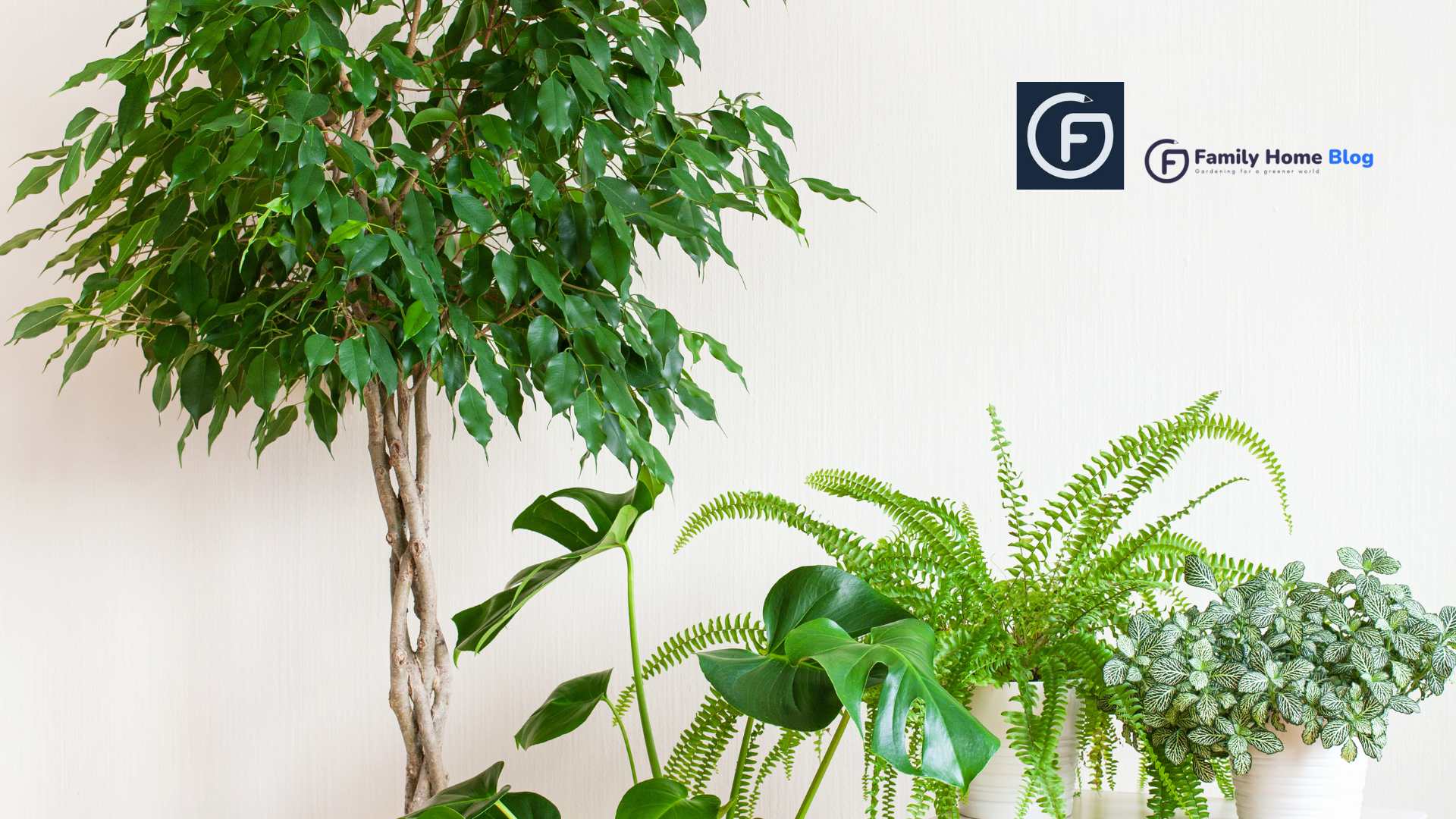When cultivating plants indoors, can your green thumb turn to stone? Don’t lose hope. Anyone can master indoor gardening by selecting appropriate plants for each home microclimate in a warm, humid room or a draughty low-light corner. Some indoor plants are resilient enough to live in almost any place.
One of the most significant variables in the success—or failure—of growing a healthy plant is selecting a plant with light requirements that fit the area.
Plants ideal for east-facing windows, south- or west-facing windows with sheer covers, or 3 to 5 feet from south- or west-facing windows. Here, we are going to discuss some large indoor plants.
Pothos
(Epipremnum aureum), One of the simplest large indoor plants to grow is frequently disregarded in favor of more showy plants such as orchids. While it may not produce flowers, this tropical vine, akin to the philodendron, boasts various leaf colors and patterns that cater to a broad spectrum of tastes and interior design styles. Pothos is tolerant of neglect, virtually pest- and disease-free, and a fantastic low-light indoor plant suited for darkened rooms and workplaces, making it nearly foolproof even for beginners.
With its aerial roots adhering to surfaces, they gracefully trail or ascend the lengthy stems, rendering this plant a versatile option for hanging baskets, plant stands, and bookshelves. Pothos is one of the best houseplants for boosting indoor air quality and cleaning your home or office.
Light Requirements:
Plants like bright indirect light but may tolerate dim light and fluorescent illumination. Direct sunlight, which can burn or discolor vegetation, should be avoided.
Rate of Growth:
Depending on the variation, the pace might range from slow to fast. More leaf variegation tends to impede growth.
Foliage:
Shiny leaves range from 4 to 12 inches long and are heart- or lance-shaped, with green, chartreuse, blue, or variegated patterns.
Flowers:
Tiny, white, hooded blossoms grow on old plants in their native habitat and are insignificant. Plants will not bloom in a typical residential environment.
Tips For Growing Pothos
Where to Expand:
Avoid cold draughts by positioning yourself near a window that receives bright indirect light.
Temperature and Relative Humidity:
Maintaining plants at temperatures exceeding 50 degrees Fahrenheit is advisable, with the optimal temperature range falling between 60 and 80 degrees Fahrenheit. Pothos enjoys high humidity, comparable to its native habitat, although it can tolerate medium or dry air. When indoor air is drier in winter, large indoor plants will benefit from additional air moisture, such as misting or a room humidifier.
Type of Soil:
Grow in a good, well-draining potting mix. Pothos favors a slightly acidic pH range of 6.1 to 6.5 but will tolerate values marginally higher or lower.
Pot Necessities:
When potting, use a container at least 1-2 inches wider than the root ball and ensure sufficient drainage holes.
Philodendron
If you like indoor plants, you’ve grown at least one philodendron. In some tropical areas, these easy-to-grow houseplants can also be cultivated outside. Because they adapt well to indoor surroundings, they’ve long been the go-to beginning plant for new parents.
Many expert indoor gardeners love them because they come in various sizes and growth behaviors, including vines and tall, treelike shrubs. The smooth, glossy leaves vary in color and shape, from tiny and heart-shaped to enormous and opulent.
Philodendron plants flourish in medium to bright natural or fluorescent light, although they can also tolerate low-light conditions. It’s essential to steer clear of direct sunlight as it may lead to leaf burning.
Rate of Growth:
Moderate to rapid.
Foliage:
While heart-shaped leaves are the most prevalent, you’ll also encounter spade-shaped, deeply cut, and spear-shaped leaves, with some growing to exceed 2 feet in length. Recent hybrids, like ‘Pink Princess’ and ‘Prince of Orange,’ showcase vibrant foliage colors such as burgundy, pink, orange, and yellow. Additionally, there are variegated foliage cultivars available.
Size:
Non-climbers: 6 to 8 feet. The vining variety can reach a height of 10 feet or more when supported.
Where to Grow:
The optimal location is near a window where direct sunlight does not strike the foliage. Place your large indoor plants away from cold draughts and heating and cooling vents. You can also give them a summer vacation outside if you keep them in an area protected from direct sunshine.
Temperature and Relative Humidity:
The optimal temperature during the day is between 65° and 85° F and around 60° F at night. Bring your plants inside before the temperatures dip below 50° F if you cultivate them outside in the summer. These tropical plants prefer a humid atmosphere but can survive in ordinary home humidity.
Type of Soil:
Use a high-quality, well-draining potting mix.
Prayer Plant Calathea Spp
This popular houseplant, or rattlesnake, peacock, or zebra, is grown for its attractive foliage in various patterns, colors, and shapes. Prayer plants dislike disturbing their roots, so only repot in early spring if they are root-bound. Calathea is a popular indoor plant for its eye-catching leaves in various patterns, colors, and shapes. These adaptable tropical plants thrive in medium to low-light conditions, making them an excellent choice for indoor spaces.
Calathea plants are easy to cultivate when given the appropriate conditions despite their reputation for being somewhat picky. They are one of the most significant plants for cleaning dangerous toxins from indoor air and are incredibly attractive. With so many calathea varieties to pick from, this lovely houseplant will enhance any home or workplace design.
Care Level:
Simple to moderate
Requirements for Lighting:
Calathea plants prefer bright, indirect window light. Leaves can burn or fade when exposed to direct sunlight. Calathea is light-tolerant; however, its markings will be less apparent. (For additional low-light houseplants, click here.)
Rate of Growth:
The growth rate can vary from moderate to rapid depending on the specific variety and the environmental conditions.
Foliage:
Oval, pointy, or lance-shaped leaves up to 12 inches long in colors of green or purple, with burgundy or purple undersides. Spotted or striped patterns come in silver, pink, yellow, or cream colors. The leaves fold upward at night and expand during the day in response to light, which is why the plant is commonly known as the “prayer plant.”
Flowers are scarce or non-existent when grown as an indoor houseplant. During the summer, little lily-like purple, pink, white, yellow, or orange flowers bloom from the plant’s base.
Size and Habit:
It usually exhibits an erect growth pattern, reaching heights between 6 and 36 inches and widths from 6 to 24 inches.
Toxicity:
Although all components of the calathea plant are safe for pets and children, eating them is not advised. When any plant is consumed, some stomach upset can develop.
ZZ PLANT (Zamioculcas Zamiifolia)
The ZZ plant’s naturally shiny leaves take minimal effort to keep their luster. Dust them with a moist cloth (leaf sprays may cause damage to the leaves). ZZ plants thrive in medium/bright indirect light. Remember that all parts of the plant are harmful, so keep children and dogs away.
It has become a favorite among sizeable indoor plant growers who want indoor greenery that doesn’t require pampering or an ideal growing environment, similar to snake plants. The ZZ plant is highly renowned for its beautiful foliage, which is so green and glossy that it almost appears polished. Look for newer ZZ plant species with variegated or deep purple foliage if you want to attempt something even more exotic.
Rate of Growth:
Slow growth rate
Height:
2–3 feet tall
Foliage:
Thick, waxy, pinnate leaflets grow alternately along the stem and range in length from 3 to 5 inches. The leaves’ color is usually dark green, varying according to the cultivar.
Flowers:
Although predominantly a leaf plant, the ZZ plant occasionally develops cream-colored spadices similar to the peace lily. The flowers are tiny and frequently hidden beneath the leaf base.
Special Characteristics:
A powerful home air purifier that filters out pollutants, including xylene, toluene, and benzene.
Propagation is simple through division or leaf cuttings.
Outdoors in the summer or year-round in warmer climates (zones 9-11).
Thick rhizomes conserve water and reduce the need for regular irrigation.
Toxicity:
If any portion of the plant is consumed, it is hazardous. Keep children and pets out of reach. When handling, wear gloves to avoid skin irritation.








